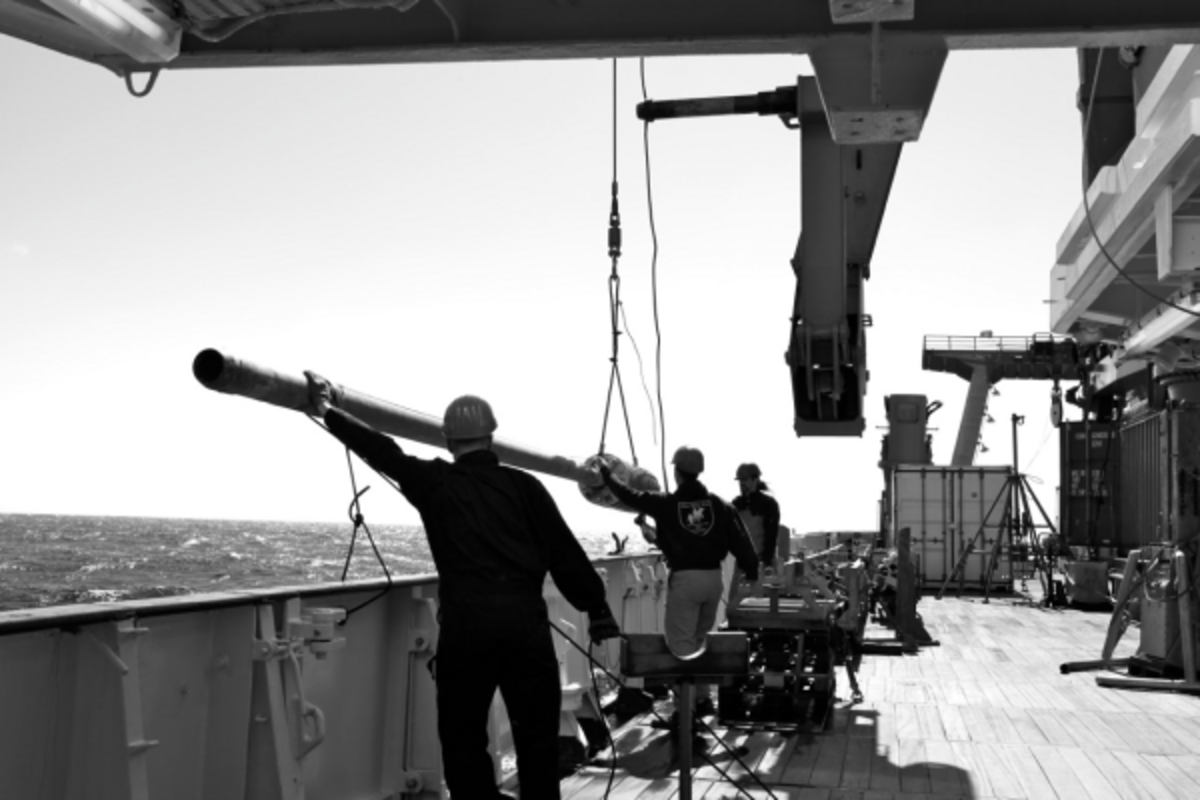Methods / Descrition Chlorinity
APPARATUS:
Eppendorfpipettes (10-100 µl and 5 cm3)
Volumetric flask (100 cm3)
10 beakers (10 cm3) + magnetic stir bars
Titration unit with dark glass bottle
Magnetic stirrer
REAGENTS:
IAPSO (certified seawater standard)
0,1 N AgNO3-solution
K2CrO4 (4.2 g)
K2CrO7 (0.7 g)
PREPARATION OF THE INDICATOR:
Dissolve K2CrO4 (4.2g) and K2CrO7 (0.7g) in 100 cm3 pure water (stable for several months!) WATCH OUT: The indicator is toxic ! Protect yourself and collect the waste for special disposal.
TITRATION:
Pipette 0.1 cm3 sample into a 10 cm-3 glass beaker and add 5 cm3 aqua bidest. Add 0.1 cm3 of indicator solution. Titrate, under permanent stirring (magnetic stirrer), until a faint orange color is observed and stays permanently.
CALIBRATION:
Calibration is made with IAPSO standard seawater . IAPSO is titrated in the same way as the sample. The f-factor is determined as ratio of the theoretical AgNO3 consumption (Vt = 0.557 cm3 for IAPSO with a salinity of 34.998) and the practical consumption (Vp) determined via titration of the IAPSO standard.

When calculating the chloride concentration of the unknown, one should bear in mind that the sum of Cl, Br and I is measured. The concentration of bromide in seawater is about 0.86 mM and the concentration of iodid is about 0.2 µM.
An IAPSO-standard with a salinity of 34.998 (specified on the bottle) has a chlorinity of 19.2787 g/kg, because:

Thus, the Cl concentration of the standard is 556 mM and the AgNO3-consumption during titration amounts to 0.557 cm3
CALCULATION :

or simplified

INTERFERENCES:
High concentrations of H2S (> 1mM) in the sample disturbe the measurements. Therefore, these samples should be acified with 1 cm3 HNO3 (0.05 N/suprapur) per cm3 sample and should be stored for 1-2 days, without lid, in a cool room.
(Don`t forget the dilution factor of the acid when you calculate the final result!)



